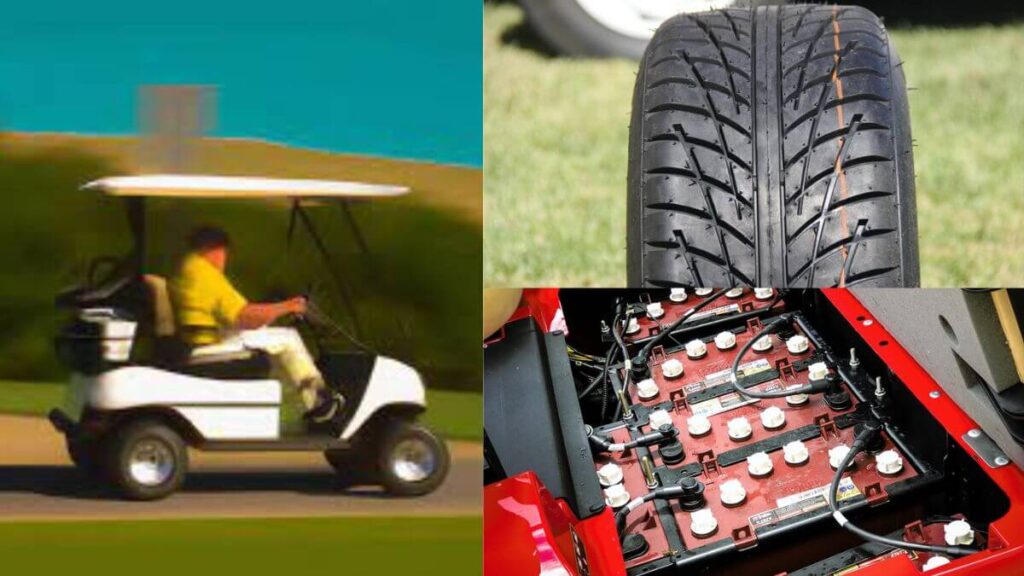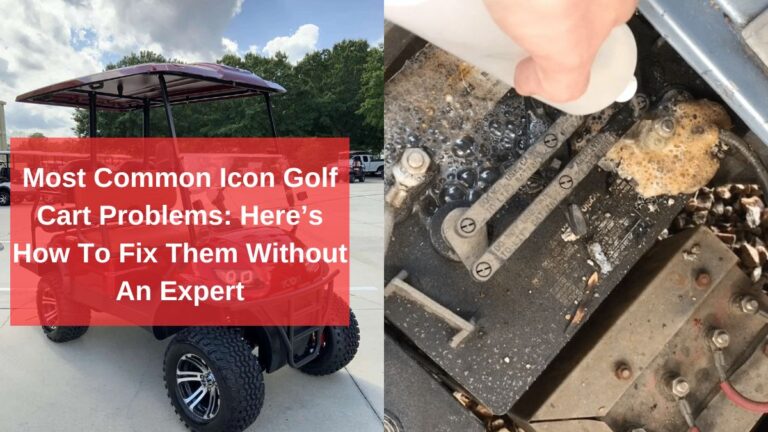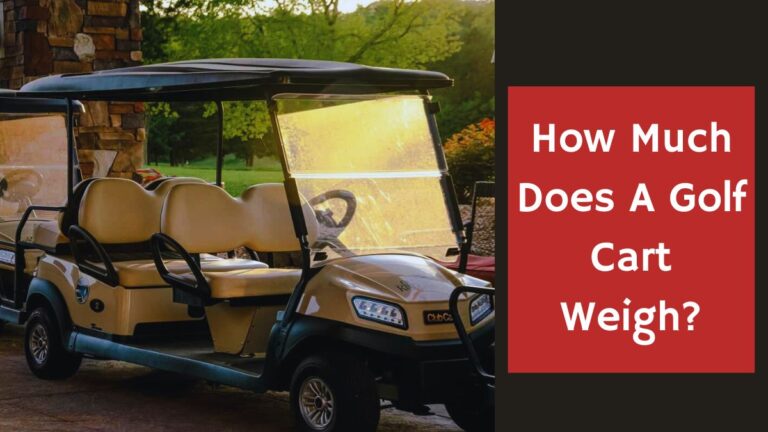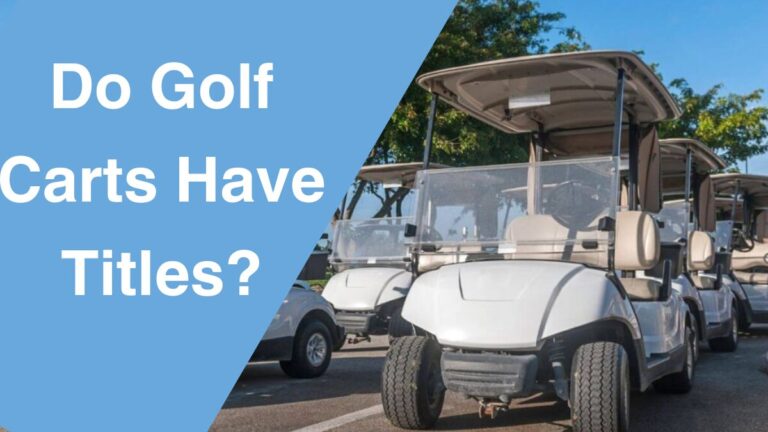How Fast Do Golf Carts Go? Guide to Speed, Safety, and Smart Upgrades

Ever wondered how fast a golf cart can go? Whether you’re zipping around the golf course, taking a joyride in the neighborhood, or thinking about making your cart go a bit faster, it’s good to know the ins and outs of golf cart speed.
In this guide, we’ll break down how fast they can go, how to stay safe, and some tips if you want to give your cart a little extra oomph. So, put on your golf hat, and let’s explore the need-for-speed side of golf carts!
Standard Golf Cart Speeds
Most standard golf carts aren’t built for speed demons. If you’ve recently bought a new golf cart, you’ve likely noticed it maxes out around 12-20 mph. This is typical for electric and gas-powered models, which are set to safe, moderate speeds.
Electric Models generally range from 12 to 14 mph without any upgrades. Their quiet nature makes them popular on golf courses and in quiet communities. Gas Models can push closer to 15 to 20 mph due to their engine power.
These speeds are perfect for the average golfer who wants a reliable, slow-paced ride. They’re also great for residential areas where safety is the priority..
Read This Article To Know More About Street Legal Golf Carts!
What About Street-Legal Golf Carts?

If you plan to take your golf cart beyond the green, you’ll need to consider street-legal requirements. Street-legal golf carts, or Low-Speed Vehicles (LSVs), can go up to 25 mph.
It’s a legal requirement in many regions for safety reasons. Going faster means the cart must be registered, insured, and meet specific safety standards, including lights, seat belts, and mirrors.
If you want a faster cart, make sure it’s street-legal. The modifications are worth it to avoid legal headaches and potential fines.
Factors That Affect Golf Cart Speed (Modifications To Make it Fast)
1. Type of Golf Cart
When it comes to choosing a golf cart, the type plays a significant role in how fast you can go and how easily you can make upgrades.
Out of the box, gas carts tend to have a slight edge in speed compared to electric models. With their internal combustion engines, they typically offer a top speed of 15-20 mph without any modifications. Many gas cart owners appreciate the consistent power output, which isn’t impacted by battery life. Gas models also tend to be more durable for long distances, especially on uneven or off-road terrain.
While electric carts might start a bit slower, they’re easier to upgrade for speed. A few tweaks to the motor, controller, and batteries can transform a standard electric cart into a speed machine.
In our experience, electric carts modified with quality parts like Navitas controllers or Plum Quick motors can outpace gas carts, reaching speeds well over 30 mph. These electric upgrades make them more efficient and environmentally friendly while giving you a significant speed boost.
Read this article: How Long Do Golf Cart Batteries Last?
2. Battery Power
Battery power is the backbone of any electric golf cart’s performance. Your choice of battery can make or break your speed potential.
Switching from a 36V to a 48V or even a 72V setup can make a massive difference. Higher voltage allows the motor to spin faster, resulting in a noticeable speed increase.
In our tests, we saw that moving from 36V to 48V typically boosts top speeds by about 4-6 mph. If you want to get into the 30+ mph range, a 72V setup can provide the necessary voltage without overloading your motor.
Lithium-ion batteries are a game-changer for electric carts. Compared to traditional lead-acid batteries, lithium-ion options are lighter, more efficient, and longer-lasting. We’ve swapped out heavy lead-acid batteries for lithium and noticed an immediate difference.
Not only did the cart accelerate faster, but it also maintained top speeds longer without draining the battery as quickly.
A lighter battery also reduces the overall weight, which translates into less drag and better handling. If you’re serious about speed, a 48V or 72V lithium setup is our go-to recommendation.
3. Motor and Controller
The motor and controller are the heart of your golf cart’s speed potential. Upgrading these components can transform your ride.
Upgrading to a powerful motor is one of the most effective ways to increase speed. We’ve experimented with Navitas 5KW motors and Plum Quick motors, both of which delivered exceptional results. With a higher-wattage motor, you can handle steeper inclines and carry more weight without sacrificing speed.
In one of our setups, a 5KW Navitas motor paired with a 600A controller pushed our cart to a reliable 35 mph, while maintaining smooth acceleration.
A high-amperage controller manages the power distribution from the battery to the motor. We’ve found that a good controller, like the Navitas TAC2 600A, allows for more precise power control, giving you a significant boost in acceleration without losing stability.
This makes it easier to maintain speed on rougher terrain or when carrying passengers. A quality controller also means you can adjust settings, so you can dial back the speed when you want to conserve battery or increase it when you’re looking for a thrill.
4. Tire Size and Type
The tires you choose have a surprising impact on your cart’s speed and handling. It’s not just about power; the right tires can make your cart more efficient.
Bigger tires cover more ground per rotation, which can translate to a 2-5 mph increase in top speed. We tested 20-inch tires on a standard setup and saw an immediate speed bump.
However, larger tires can affect stability, particularly on lifted carts. A moderate 2-4 inch lift can help accommodate bigger tires without making the cart too top-heavy.
If you’re aiming for speed, we recommend using street-specific tires over off-road or knobby ones. Street tires have less resistance and provide a smoother, faster ride. We switched out standard golf tires for street-specific ones and immediately noticed better acceleration and a more stable ride at higher speeds.
5 – Gear Ratio
One often overlooked but impactful aspect of speed modifications is adjusting the gear ratio. It’s a simple tweak, but it can make a big difference.
Changing the gear ratio is like shifting gears on a bike. A lower gear ratio means the motor has to work harder to cover the same distance, but it can push the cart faster. We adjusted our cart’s stock 12:1 gear ratio to a 6:1 ratio, which gave us a noticeable increase in top speed without significantly sacrificing torque. This change allowed us to hit higher speeds on flat ground without struggling on slight inclines.
While a lower ratio increases top speed, it can reduce torque, making it harder to carry heavy loads or go uphill. If you plan to load up your cart or tackle hilly terrain, keep a balanced gear ratio. Our 6:1 setup was the sweet spot—good for flat cruising while still giving decent acceleration.
6 – Motor
The size of the motor you have installed in your golf cart may affect the top speed and performance. Default motors from manufacturers are designed and installed for use on the field. However, you can customize its setting and install a large motor that improves the stability and top speed of your golf cart.
Gas Vs. Electric Golf Cart Speed: Which One Is Faster?

The key difference between golf cart models is the power source. It’s a common myth that gas-powered electric carts are faster which is true in some cases. For example, if you consider going uphill driving, then the motor cart will always outrun the electric one.
However, technological advancements have made this possible for electric carts to outrun motor carts on a smooth road. Electric golf carts can reach the top speed of 15-25 mph, whereas gas carts can achieve the top speed of 20-25 mph.
It’s worth noting that the speed factor depends on various factors that I mentioned above, and there isn’t a major speed difference between any of them.
Now, before you consider buying one, calculate the cost of maintenance, cost of operation, their impact on the environment, and most important thing that they are eligible to acquire title for legal use.
You can learn more about Golf cart titles here!
What You Need to Know Before Speeding Up? (Legal Considerations)

We can’t stress enough the importance of knowing local laws. While it’s tempting to go all out and make your cart a speed machine, you might end up breaking the law. In most areas:
- 20 mph is the limit for non-street-legal carts.
- 25 mph is allowed if your cart is street-legal, with the proper registration, lights, seat belts, and insurance.
- Over 25 mph typically requires your cart to be registered as a motor vehicle. This involves higher costs and stricter safety standards.
High-Speed Golf Cart Safety and Performance Essentials
Braking Systems: Upgrade from stock to front disk brakes for speeds above 25 mph, ensuring significantly improved stopping power. Regular brake checks and adjustments are necessary for optimal responsiveness.
Steering and Stability: Reinforce the steering column and use a heavy-duty steering rack to maintain control at higher speeds. If the cart is lifted, coil-over shocks are recommended for better suspension and smoother handling.
Balance Speed and Stability: Stick to moderate lifts (2-4 inches) to avoid reducing stability while increasing speed.
Maintenance Priorities: Regular battery inspections are crucial since high speeds drain batteries quickly. Keep tires properly inflated to maintain both stability and speed.
Use Reliable Parts: Choose trusted brands like Navitas, Plum Quick, and Alltrax for performance modifications.
Prioritize Safety Gear: Install seat belts as a must-have safety feature, and consider a roll cage for speeds exceeding 30 mph.Controlled Testing: Test modified carts in safe, flat, open areas to assess handling and braking before going on public roads.

I’m Khawar Iqbal, Founder of Golfsportal. I’m excited to be your guide in the world of Golf. At Golfsportal, I will keep you updated with insightful information that will help you improve your golfing experience and knowledge about what’s currently happening in the industry.






